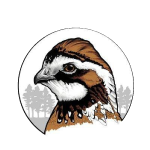Resources
Wildland fire resources are critical to understanding the complexities of how to best manage the natural and human elements of wildland fire. This space contains information to increase information sharing within the community of practice working on Wildland Fire and Prescribed Burning.
Scientists participate in a Prescribed Fire Science Consortium collaborative fire research event at Tall Timbers Research Station. Photo: David Godwin, Southern Fire Exchange / University of Florida.
Joint Fire Science Program Fire Science Exchange Network
The Joint Fire Science Program (JFSP) Fire Science Exchange Network is a national collaboration of 15 regional fire science exchanges that provides the most relevant, current wildland fire science information to federal, state, local, tribal, and private stakeholders within ecologically similar regions. The network brings fire managers, practitioners, and scientists together to address regional fire management needs and challenges.
World of Wildland Fire YouTube Channel
The World of Wildland Fire YouTube channel includes videos on fuels, fire behavior, and fire ecology.
LANDFIRE YouTube Channel
The LANDFIRE YouTube channel includes videos on topics including LANDFIRE applications and case studies, webinars, and tutorials.
Wildland Fire Lessons Learned Center
Wildland Fire Lessons Learned Center provides community discussion boards, podcast episodes, videos, and other resources aimed at making wildland fire performance and organizations safer.
National Interagency Prescribed Fire Training Center
National Interagency Prescribed Fire Training Center provides opportunities for federal, state, local, and tribal government agencies and other organizations to build skills and knowledge of prescribed fire, with an emphasis on field experience.
Wildland Fire Safety Training Annual Refresher Catalog
The National Wildfire Coordinating Group's Wildland Fire Safety Training Annual Refresher (WFSTAR) catalog includes a variety of modules helpful to wildland fire practitioners.
World of Wildland Fire
World of Wildland Fire includes a variety of online courses for fire science educators, trainers, and the public on topics including fire behavior, fuels, and fire ecology.
National Fire Academy online courses
Online learning is a terrific option if you want to take National Fire Academy (NFA) classes. Our online self-study and mediated courses are free to fire and emergency services personnel, and international students are welcome. Continuing Education Units (CEUs) are available for most courses. Successful completion is added to your NFA transcript, and you earn an NFA certificate.
Wildland Fire Learning Portal
Wildland Fire Learning Portal is an online learning management system that offers a variety of self-enroll courses for wildland fire professionals.
Fire in the Field
Fire in the Field online trainings are offered online or by CD-ROM, and are recognized by many states as NWCG training equivalents.
Southern Fire Exchange Online Resources
Southern Fire Exchange maintains a list of online resources, archived webinars, and trainings including NWCG and non-NWCG resources on topics including smoke management, general prescribed fire, and fire weather. Many resources listed on this page are also included on SFE’s list.
Northern Bobwhites and Fire: A Perfect Match
Prescribed fire, bobwhite ecology, and local site conditions need to be aligned for optimal bobwhite population response. This course discusses the context of fire frequency, scale, and seasonality for bobwhite management and restoration.
Basic Prescribed Fire Training
Extension Foundation Campus: Basic Prescribed Fire Training is an online course for landowners, land managers, state/federal agency personnel. In this course participants will develop a basic knowledge of the use, application and effects of prescribed fire. For more information or to enroll, contact John Weir, Oklahoma State University, at john.weir@okstate.edu
Introduction to Southeastern Prescribed Fire
Extension Foundation course: the course is designed to introduce students to the fundamental basics of prescribed burning in Southeastern forested ecosystems. At the end of the course the student will have a working knowledge of fire law, fire terminology, fire prescriptions, fire safety, firebreaks, smoke management and a basic understanding of how to conduct a prescribed burn. This course is not intended to take the place of state Certification courses, workshops, or experience in the field. Rather, it is intended to give students a basic understanding of the principles of prescribed fire and fire effects.
NACo County Wildfire Playbook
A County Leadership Guide to Help Communities Become More Fire Adapted and Learn to Live with Wildland Fire.
Introduction to Prescribed Fire in Southern Ecosystems
This USDA Forest Service publication is a guide for resource managers on planning and executing prescribed burns in Southern forests and grasslands. It includes explanations of reasons for prescribed burning, environmental effects, weather, and techniques as well as general information on prescribed burning.
The LANDFIRE Program
The LF Program provides 20+ national geo-spatial layers (e.g. vegetation, fuel, disturbance, etc.), databases, and ecological models that are available to the public for the US and insular areas.
National Wildfire Coordinating Group
National Wildfire Coordinating Group’s catalogue provides specific training for NWCG positions.
SE FireMap Version 1.0 BETA User Guide
Learn how to navigate the web map! This document offers a walkthrough with screenshots.
Wildland Fire Workspaces
Wildland Fire Workspaces offer a platform to enhance work flow and facilitate efficient sharing of ideas, datasets, products, publications, and more with others who have similar interests or missions. The Workspaces are bringing together a diverse set of individuals and expertise to promote dialogue and coordination.






















